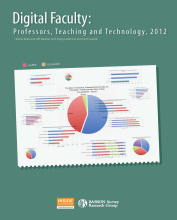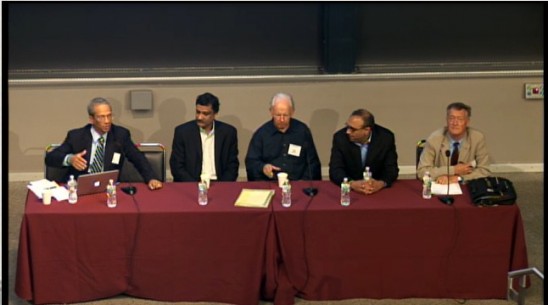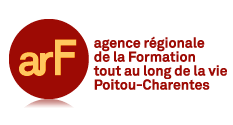How Big a Deal Is Apple's iTunes U Course Manager?
 By Joshua Kim. Have you gotten your head around Apple's iTunes U Course Manager?
By Joshua Kim. Have you gotten your head around Apple's iTunes U Course Manager?Let me explain how I understand Course Manager, as I remain somewhat confused about exactly what this does and how big a deal this platform might be.
What iTunes U Course Manager Is:
- iTunes U Course Manager is a web-based tool that allows anyone with an Apple ID to create "courses" that can be downloaded and synched to the iTunes U iPad app.
- Courses are collections of curricular materials that can be organized around a course narrative, with weeks or modules.
- Curricular content can include documents (pdfs, Office documents), audio and video files.
- Enrollment in courses can be restricted. The maximum enrollment for an educationally affiliated Apple ID logon (faculty or staff) is 1,000 students per class. Non-affiliated courses can have 50 students. This enrollment option is the new feature for courses, and it is important because for the first time it seems possible to deliver class materials (articles, lectures, etc) in a way that is both easy and preserves copyright and intellectual property protections.
- Courses are downloaded from the iTunes U app, which is only available on iOS devices. Course material can be updated by course faculty or course builders, and the updates will sync.
- When students download a course for the iTunes U app on their iPad they can choose to go through and download the course content (documents, images, audio or video files) to their iPad. The documents can then be read in whatever iPad app desired (such as iBooks), and the class videos land in the video folder. This allows offline consumption of content.
- The courses have additional features, such as "Notes," which give students the ability for the students to create (and share?) notes around the content.
Why iTunesU Course Manager Might Be a Big Deal:
- Courses created in Course Manager and downloaded in the iTunes U app get around the limitation of public or private iTunes U sites. Since it is possible to restrict enrollment (by Apple ID) the course materials are kept private and protected.
- The ability to upload course materials that can be seamlessly delivered to students with iPads solves many of the digital content distribution challenges we face in higher ed - if everyone has an iPad. Curricular content, both documents and rich media, can be delivered to students with iPads without the need to go through a third party publishing platform. These digital course materials can be used by students offline, as long as they download the curriculum when they have a network connection.
- The student experience of consuming curricular content on an iPad looks to be rather elegant. The curricular content, both text and rich media, displays beautifully. This content can be wrapped into a course narrative, with modules and metadata surrounding the materials.
- Courses created with iTunes U Course Manager and delivered through the iTunes U app will not replace the need for a web based learning management system (lms). Rather, the combination of the web based Course Manager and the iTunes U app represents what looks to me like an easy and cheap (Course Manager is free) method to organize and deliver curricular content to mobile devices (as long as they are iOS devices).
- I wonder if the digital coursepack providers, such as XanEdu and Study.net and AcademicPub, are concerned about this platform? If a university is able to clear the copyright hurdles with the digital content used in a course it seems that they could then deliver this curriculum directly to students, bypassing the coursepack vendor. I still have more questions than answers about how this would work, and I see many limitations of this approach (no paper fulfillment and only iOS), but for institutions with an iPad program this is an approach that will be explored.
There remain a number of challenges to this LMS + Apple Courses model.
First, each student needs to have an iOS device - and preferably an iPad. Android or other mobile OS users need not apply. Stay within the Apple world and the curricular content consumption experience is great - stray and you are left without options. Apple is smart to make the Course Manager and iTunes U software free, as the ability to easily create a great tablet / mobile experience will push colleges to consider 1-to-1 iPad programs.
The second challenge is that the LMS + Apple Course model separates the consumption of curricular content (on the iOS device) and the production of active learning (via blogs and discussion boards in the LMS). Even if the mobile experience for the major LMS platforms improves dramatically (which I hope), students will still need to go outside of the Apple Course environment. Discussions and formative assessments are separated from curricular content.
In the future I expect that the features available in Apple iOS Courses will improve. FaceTime seems like a natural addition - so students and instructors could easily jump into a video chat when spending time with the educational content. Some sort of assessment and survey engine should be a relatively straightforward addition. Perhaps Apple will add polling, so the iOS Course can be used to complement a face-to-face class.
Despite these challenges, I see the evolving Course Manager and iTunes U Courses as a compelling development.
We have struggled to find a robust way to deliver a combination of text and multimedia curricular content that is organized around a course narrative to mobile devices.
Apple seems to be offering us, or at least those of us fully in the Apple universe, a solution.














/https%3A%2F%2Fprofilepics.canalblog.com%2Fprofilepics%2F1%2F0%2F1076071.jpg)